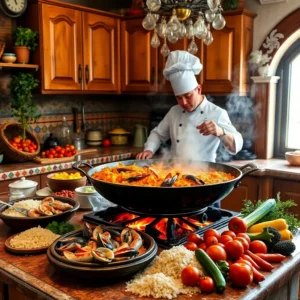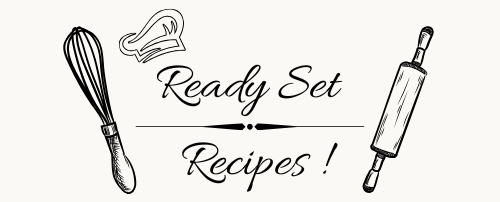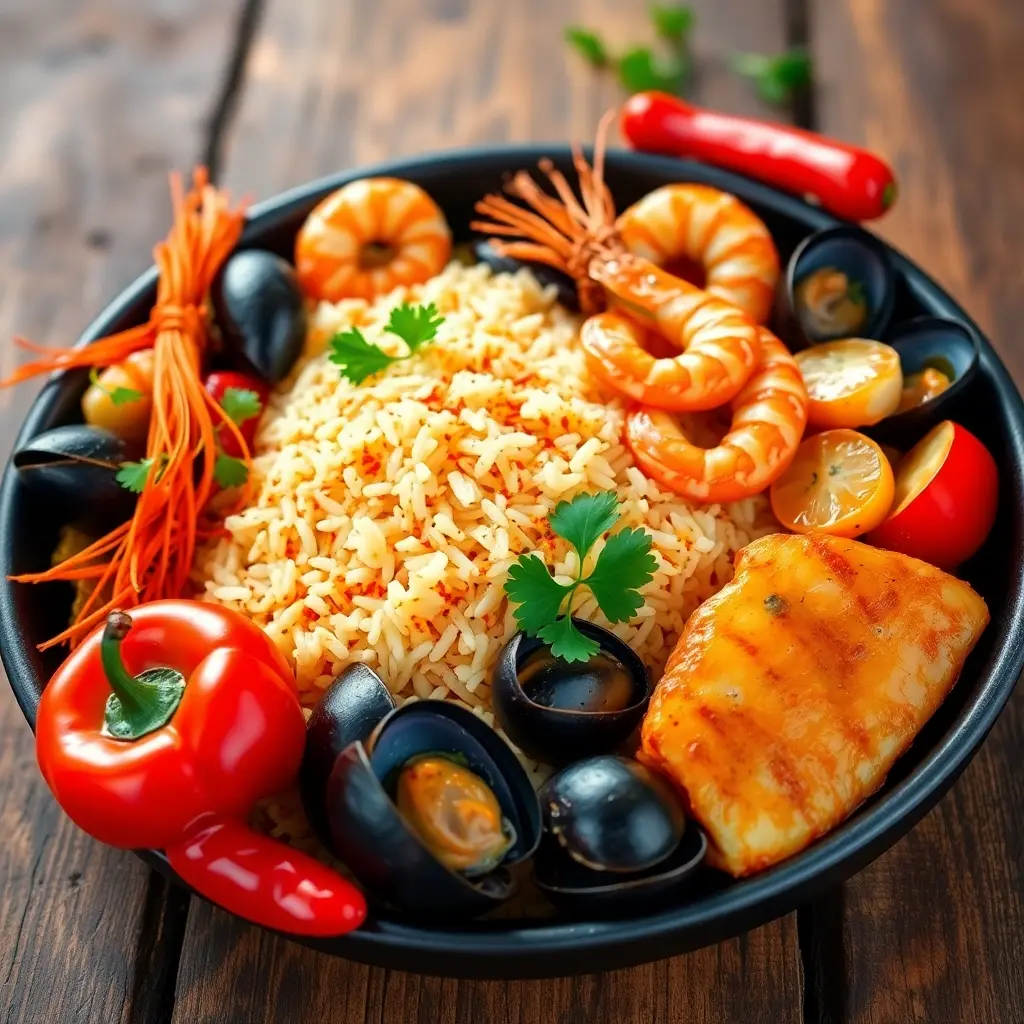Paella, a classic Spanish dish with roots in Valencia, is as much an experience as it is a meal. This vibrant, flavorful one-pan rice dish has earned its place as a symbol of Spanish culture and hospitality. From the comforting aroma of saffron to the satisfying crackle of the socarrat (the crispy bottom layer of rice), paella is a feast for the senses. In this article, we’ll walk you through the journey of making an authentic paella recipe, covering every detail from ingredients to the final serving. Whether you’re a novice or a seasoned home cook, this guide ensures you’ll create a masterpiece every time.
Part 1: Introduction to Paella
Origins and History of Paella
Paella traces its origins to Valencia, Spain, where it was traditionally cooked by farmers and laborers over an open fire. Initially, this dish was a hearty mix of rice, vegetables, and proteins like rabbit or chicken, reflecting the regional abundance. Over time, seafood variations emerged, inspired by the Mediterranean’s coastal riches. Each version of paella showcases not just flavor but also the cultural identity of its region.
Paella wasn’t just a dish; it was a social affair. Families gathered, stirring the pan together and enjoying the aromas wafting through the air. As the recipe spread, it embraced countless variations, each staying true to its roots while adapting to local tastes.
Significance in Spanish Cuisine
Today, paella holds a special place in Spanish culinary traditions. It’s synonymous with celebrations, family gatherings, and festivals. This dish is a testament to Spain’s rich heritage, combining simplicity with sophistication. While the ingredients may vary, the emphasis on fresh, local produce remains unchanged, making it a versatile and beloved meal.
For those eager to understand its cultural depth, paella symbolizes harmony, the union of land, sea, and humanity. Its preparation invites creativity yet demands respect for tradition, making it an art form as much as a recipe.
Part 2: Essential Ingredients for Traditional Paella
Rice Varieties Suitable for Paella
The type of rice you choose can make or break your paella recipe. Traditional Spanish chefs often insist on bomba rice, a short-grain variety that absorbs liquid without becoming mushy. However, other short-grain types like Calasparra or Arborio can work well in a pinch. These varieties are particularly effective at soaking up the rich flavors of the broth while maintaining their firm texture.
Moreover, using long-grain rice is generally discouraged since it doesn’t provide the same creamy consistency characteristic of authentic paella. If you’re unsure, focus on short-grain, high-starch rice varieties for the best results.
Proteins: Seafood, Poultry, and Meats
What makes paella truly special is its versatility. Depending on your preference, you can include fresh seafood such as shrimp, mussels, or clams, alongside tender cuts of chicken or rabbit. Each protein contributes its unique flavor profile, complementing the saffron-infused rice beautifully.
Notably, seafood paella—also known as paella de marisco—is perhaps the most famous variation, featuring an array of marine delights. Meanwhile, the classic paella Valenciana combines chicken and rabbit for a hearty, earthy flavor.
Vegetables and Aromatics
Vegetables play a crucial supporting role in paella, adding layers of flavor and color. Bell peppers, tomatoes, and peas are common choices, not only because of their vibrant hues but also due to their subtle sweetness. Fresh aromatics like garlic, onion, and parsley elevate the dish, making every bite more fragrant and flavorful.
Importance of Saffron and Other Spices
Saffron is the soul of authentic paella, lending the rice its signature golden hue and floral aroma. This prized spice, though expensive, is indispensable for creating the authentic Spanish flavor. Additionally, paprika, bay leaves, and freshly cracked black pepper enhance the dish, balancing its rich, savory elements.
Part 3: Equipment Needed for Preparing Paella
 Choosing the Right Paella Pan
Choosing the Right Paella Pan
When it comes to preparing an authentic paella recipe, the pan you use is as important as the ingredients themselves. A wide, shallow pan with slightly sloped sides is essential because it allows the rice to cook evenly. The traditional paella pan, often made of carbon steel, distributes heat uniformly, ensuring that every grain of rice absorbs the rich broth.
Although many home cooks might consider using a regular skillet, it’s worth investing in a proper paella pan. These pans not only make cooking easier but also help achieve the coveted crispy layer of rice at the bottom, known as the socarrat.
Heat Sources: Stove, Oven, or Open Fire
Selecting the right heat source is equally crucial. Open fires or outdoor grills are traditional and deliver a smoky aroma that elevates the dish. However, most home cooks opt for stovetops, which are practical and easy to control.
Interestingly, if you have access to an oven, you can use it to maintain consistent heat for larger batches of paella. Whichever method you choose, ensure the heat is evenly distributed beneath the pan to avoid unevenly cooked rice.
Additional Tools for Preparation
While the pan takes center stage, having a few additional tools can make your cooking experience smoother. A long wooden spoon or spatula helps you stir the sofrito and other ingredients without damaging the pan’s surface.
For the broth, a ladle is indispensable, allowing you to add liquid gradually while maintaining the perfect consistency. Furthermore, having a sharp knife and cutting board ready for prepping ingredients saves time and effort.
To truly embrace the art of paella making, it’s essential to equip yourself with these tools. They not only streamline the cooking process but also contribute to the dish’s authenticity, ensuring that your paella is as close to the traditional Spanish version as possible.
Part 4: Step-by-Step Cooking Instructions
 Preparing the Sofrito Base
Preparing the Sofrito Base
The foundation of any great paella recipe is the sofrito—a savory mixture of onions, garlic, and tomatoes cooked until deeply fragrant. First, heat olive oil in your paella pan over medium heat. Then, add finely chopped onions and sauté until translucent. After that, stir in minced garlic, cooking just long enough to release its aroma without burning.
Next, incorporate grated tomatoes or tomato puree, letting the mixture cook down into a rich, thick paste. Season it with paprika and a pinch of salt to enhance the flavors. The sofrito not only provides depth but also ensures that every bite of paella is infused with bold Spanish flavors.
Adding Proteins and Vegetables
Once the sofrito is ready, add your chosen proteins. If you’re using chicken or rabbit, brown the pieces in the pan to lock in their juices. For seafood paella, you’ll add the shrimp, mussels, or clams later in the cooking process to avoid overcooking.
Simultaneously, toss in your vegetables, such as chopped bell peppers and peas, which will add both color and sweetness to the dish. Stir gently to coat everything in the sofrito, ensuring every ingredient is infused with its flavors.
Incorporating Rice and Broth
At this stage, it’s time to introduce the rice. Spread it evenly across the pan, ensuring that every grain is in contact with the sofrito mixture. Then, pour in the hot broth, which should already be infused with saffron for that signature golden color and floral aroma.
Resist the urge to stir once the rice is added; instead, let it simmer gently. Stirring disrupts the cooking process and prevents the formation of the prized socarrat layer at the bottom.
Achieving the Perfect Socarrat
As the liquid reduces, you’ll notice the rice beginning to puff and absorb all the delicious flavors. To create the socarrat, increase the heat slightly for the last few minutes of cooking. Listen for a faint crackling sound, but be cautious not to burn the bottom.
Once you’ve achieved the perfect socarrat, remove the pan from the heat and cover it with a clean towel. Let it rest for about 5-10 minutes. This step allows the flavors to meld and ensures the rice finishes cooking to perfection.
By following these steps carefully, you’ll create a stunning dish that not only tastes authentic but also captures the essence of Spanish cooking.
Part 5: Serving and Enjoying Paella
Traditional Presentation Methods
When it comes to serving an authentic paella recipe, presentation matters as much as the flavor. Traditionally, paella is served directly from the pan it’s cooked in, making it the centerpiece of the table. This communal style of dining not only emphasizes togetherness but also allows guests to enjoy the dish’s visual appeal—the vibrant yellow rice adorned with seafood, vegetables, or meats.
Additionally, consider garnishing the dish with fresh parsley and lemon wedges, which not only add a burst of color but also enhance the overall flavor. These simple touches elevate the dining experience and give the dish a festive flair.
Suggested Side Dishes and Beverages
Although paella is a complete meal on its own, pairing it with complementary side dishes can further enhance the experience. A crisp green salad with vinaigrette adds a refreshing contrast to the rich flavors of the rice. Alternatively, a serving of garlic bread or a plate of roasted vegetables can provide a delightful balance.
For beverages, stick with refreshing options like sparkling water or citrus-infused drinks. These pair well with the dish and help cleanse the palate between bites.
Tips for Reheating and Storing Leftovers
If you’re lucky enough to have leftovers, reheating and storing them properly ensures that your paella remains as delicious as it was when freshly prepared. To store, transfer the cooled paella to an airtight container and refrigerate it within two hours of cooking. It’s best consumed within three days to maintain its texture and taste.
When reheating, avoid using the microwave if possible, as it can dry out the rice. Instead, reheat the paella in a skillet over medium heat with a splash of broth or water. This method helps revive its moisture while preserving the crispy socarrat.
Serving paella isn’t just about eating—it’s about creating an atmosphere of celebration and sharing. With these tips, you can enjoy this classic Spanish dish in its full glory, whether freshly prepared or as a flavorful leftover.
Part 6: Nutritional Information and Considerations
Calorie and Macronutrient Breakdown
A well-prepared paella recipe is not only flavorful but also packed with nutritional value. Depending on the ingredients, a single serving of paella typically contains around 350–450 calories. This estimate accounts for a balanced mix of proteins, vegetables, and rice.
Paella is rich in carbohydrates, primarily from the rice, making it an excellent energy source. Additionally, the inclusion of proteins such as chicken, rabbit, or seafood ensures a healthy dose of essential amino acids. The olive oil used in cooking provides healthy fats, while the vegetables contribute fiber, vitamins, and minerals.
Allergen Information
It’s important to be aware of potential allergens in paella, especially if serving it to guests. Seafood paella, for instance, may include shellfish such as shrimp, mussels, or clams, which are common allergens. Additionally, some variations use nuts or other ingredients that could trigger allergies.
For a safer option, consider labeling the dish’s ingredients or preparing a vegetarian version that eliminates common allergens. This way, everyone can enjoy paella without worry.
Modifications for Dietary Restrictions
One of the best things about paella is its versatility, which allows it to accommodate various dietary needs. For those following a vegetarian or vegan diet, replace the proteins with hearty vegetables like artichokes, zucchini, or mushrooms. You can also use vegetable broth instead of chicken or seafood stock.
If you’re aiming to reduce the dish’s calorie content, opt for leaner protein sources such as chicken breast or eliminate oil-heavy components. Additionally, using brown rice or quinoa instead of traditional white rice can increase the fiber content, making the dish even healthier.
Paella is a dish that can cater to nearly every preference or requirement. By making thoughtful adjustments, you can enjoy its rich flavors while aligning with your health goals or dietary needs.
Part 7: Frequently Asked Questions about Paella
What is the origin of paella?
Paella originated in Valencia, Spain, where it was first created as a hearty dish for farmers and laborers. Its name comes from the shallow pan, or “paellera,” in which it’s traditionally cooked. Over time, paella evolved to include regional variations, showcasing Spain’s rich culinary diversity.
Can I use any type of rice for paella?
Not all rice is suitable for paella. While you might be tempted to use what’s in your pantry, short-grain varieties like bomba or Calasparra are ideal. These types absorb liquid without losing their shape, resulting in the perfect texture and flavor. Long-grain rice is best avoided, as it lacks the creamy consistency that defines authentic paella.
How do I achieve the crispy bottom layer (socarrat)?
The socarrat forms when the rice at the bottom of the pan caramelizes slightly, creating a crispy and flavorful crust. To achieve this, allow the paella to cook undisturbed for the final minutes, then increase the heat briefly. Listen carefully for a faint crackling sound, but be cautious not to burn the rice.
Is it necessary to use saffron in paella?
Yes, saffron is a key ingredient in traditional paella. It provides the dish’s signature golden color and a distinct, subtle aroma. While saffron can be pricey, only a small amount is needed to make a big difference. If unavailable, turmeric can be a temporary substitute, though it won’t replicate saffron’s unique flavor.
What are common mistakes to avoid when making paella?
One of the most common mistakes is over-stirring the rice after the liquid has been added, which disrupts the cooking process and prevents the formation of the socarrat. Additionally, using too much liquid or overcrowding the pan can lead to unevenly cooked rice. Always ensure the ingredients are balanced and the pan is not overloaded.
How can I make a vegetarian or vegan paella?
To create a vegetarian or vegan version, swap proteins like chicken or seafood for hearty vegetables such as artichokes, bell peppers, and zucchini. Use vegetable broth instead of meat-based stocks, and include spices like smoked paprika to enhance the flavor. A well-prepared vegan paella can be just as satisfying as the traditional versions!

